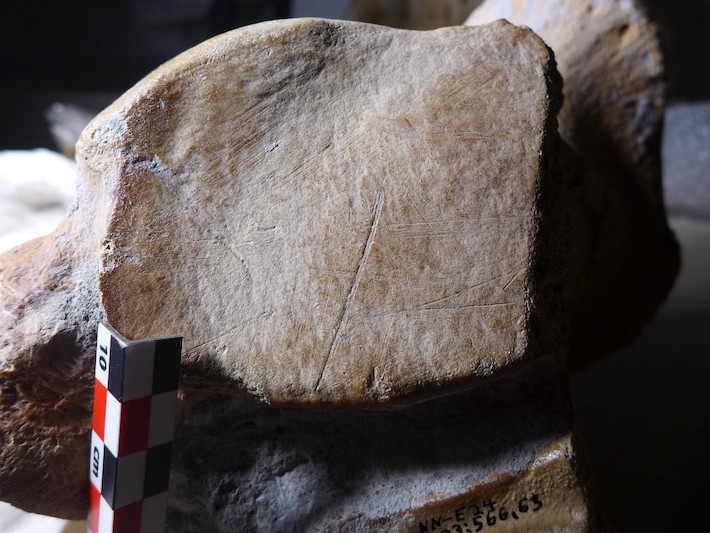 NEUWIED, GERMANY—Neanderthals may have formed much larger social groups than previously thought, according to a Science Magazine report. Archaeozoologists Lutz Kindler and Sabine Gaudzinski-Windheuser of the MONREPOS Archaeological Research Center and their colleagues examined more than 3,000 bones from the 125,000-year-old remains of an estimated 70 Palaeoloxodon antiquus individuals recovered in east-central Germany at a site situated along an ancient lakeshore. This extinct species of elephant stood nearly 13 feet tall at the shoulder, and would have required an organized hunt to fell, the researchers explained. The analysis showed that most of the bones came from adult male elephants, and that as much as four tons of meat was carefully removed from each animal—enough to feed 350 people for a week, or 100 people for a month. Dating of the elephant bones indicates that the hunting and butchering was repeatedly carried out over a period of about 300 years. “This is really hard and time-consuming work,” Kindler said. “Why would you slaughter the whole elephant if you’re going to waste half the portions?” Read the original scholarly article about this research in Science Advances. To read about butchered remains of Palaeoloxodon antiquus found in the classical world, go to "World Roundup: Greece."
NEUWIED, GERMANY—Neanderthals may have formed much larger social groups than previously thought, according to a Science Magazine report. Archaeozoologists Lutz Kindler and Sabine Gaudzinski-Windheuser of the MONREPOS Archaeological Research Center and their colleagues examined more than 3,000 bones from the 125,000-year-old remains of an estimated 70 Palaeoloxodon antiquus individuals recovered in east-central Germany at a site situated along an ancient lakeshore. This extinct species of elephant stood nearly 13 feet tall at the shoulder, and would have required an organized hunt to fell, the researchers explained. The analysis showed that most of the bones came from adult male elephants, and that as much as four tons of meat was carefully removed from each animal—enough to feed 350 people for a week, or 100 people for a month. Dating of the elephant bones indicates that the hunting and butchering was repeatedly carried out over a period of about 300 years. “This is really hard and time-consuming work,” Kindler said. “Why would you slaughter the whole elephant if you’re going to waste half the portions?” Read the original scholarly article about this research in Science Advances. To read about butchered remains of Palaeoloxodon antiquus found in the classical world, go to "World Roundup: Greece."
Elephant Bones Suggest Neanderthals Gathered in Large Groups
